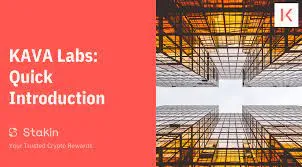What is KAVA Labs?
The Kava Network is an innovative Layer-1 blockchain that combines the speed and scalability of the Cosmos SDK with the developer support of Ethereum. Through its unique co-chain structure, developers can build for Web3 and next-generation blockchain technologies. This architecture functions similarly to other blockchains in the Cosmos ecosystem and is designed to be interoperable between chains.
What is KAVA Labs Used For?
- Seamless interoperability: Developers can build on any environment they prefer without losing access to users and assets of the other chain, thanks to the seamless interoperability between the Ethereum and Cosmos Co-Chains.
- Optimized scalability: The Kava Network’s unique architecture, powered by the fast Tendermint Core consensus engine, allows for unrestricted movement of users, assets, and projects at a massive scale between Kava and other relevant ecosystems, ensuring optimized scalability.
- Rapid ecosystem growth: The Kava Network ensures rapid growth of its ecosystem by implementing innovative and transparent on-chain incentive programs that adequately reward top builders in both the Ethereum and Cosmos ecosystems for driving growth on the platform.
What is KAVA Crypto?
The KAVA token plays a critical role in the security, governance, and operational aspects of the platform, serving three main purposes:
- Security: To ensure security, the top 100 nodes on the Kava Network use a bonded stake in KAVA tokens, which is weighted by value, to confirm blocks. Validators are incentivized with KAVA as block rewards and a percentage of the network’s transaction fees. However, they also face the risk of losing KAVA through strict slashing conditions such as failure to maintain high uptime and double signing transactions.
- Governance: The KAVA token is used for proposing and voting on critical parameters of the Kava Network, including but not limited to the supported assets and Dapps types, debt limits, acceptable assets to use as debt collateral, collateral ratio, fees, and savings rate for various financial instruments added to the network. Additionally, the token is utilized for voting on proposals that affect the Kava Network’s SAFU Fund and treasury allocation, such as reward payouts for incentive programs, making it crucial to the platform’s governance.
- Incentives: A portion of KAVA emissions is set aside as incentives to expand the network, which are directly provided to the top projects on each chain to encourage growth, foster healthy competition, and increase the vibrancy of the Kava ecosystem.
What is the Current Price of KAVA Coin?
Currently, there are 442,707,214 KAVA coins in circulation, and the maximum supply is unknown. On August 30, 2021, the highest price paid for Kava Labs(KAVA) was $9.12. As of the time of writing, the KAVA market cap stands at $402,667,745, and the current KAVA coin price per is $0.8823. The coin has a 24-hour trading volume of $10,838,943.
Where can you buy Kava Labs(KAVA)?
Trading of KAVA tokens is possible on both centralized and decentralized cryptocurrency exchanges, with MEXC Global being the most popular marketplace for buying and selling the tokens.
How to Buy KAVA Tokens?
To view available trading pairs, you can search for “KAVA” using the search bar on MEXC Global.
A detailed guide on how to purchase KAVA tokens is also available.
KAVA Labs Key Features
Co-Chain Architecture
The co-chain architecture of the Kava Network is its primary distinguishing feature, enabling developers to create and deploy their applications using either the EVM or Cosmos SDK execution environments, ensuring smooth compatibility between the two.
The co-chains within the Kava Network operate as two halves of a brain, with the Cosmos Co-Chain tailored to meet the needs of developers in the Cosmos ecosystem, and the Ethereum Co-Chain optimized for those in the Ethereum ecosystem. The Translator Module acts as a bridge between the Co-Chains’ two execution environments, ensuring their seamless and effective collaboration on a massive scale.
The Kava Network’s Layer-1 architecture, centered around developers, enables the convergence of the industry’s two most popular execution environments, Ethereum and Cosmos, onto a single platform.
The Cosmos Co-Chain: The Cosmos Co-Chain, which operates on the Cosmos SDK blockchain, is exceptionally scalable and secure. It connects Kava to over 35 chains and the $60B+ Cosmos ecosystem through the IBC protocol.
The Ethereum Co-Chain: The Kava Network offers an execution environment that is compatible with EVM, providing Solidity developers and their decentralized applications (dApps) with the chance to utilize the scalability and security features of the platform on the Ethereum Co-Chain.
Cosmos SDK and Tendermint Core
The Kava Network is built using the Cosmos-SDK framework, an open-source toolset that enables the network to support Proof-of-Stake blockchains that are publicly accessible.
On-Chain Incentives
The Kava Network introduces an innovative way of incentivizing developers, where a portion of KAVA emissions is allocated transparently and directly to protocols. This approach encourages usage and drives growth in the Kava ecosystem. Following the Kava 10 upgrade and the Kava Network’s mainnet launch, the incentive module will distribute KAVA emissions between both chains. The top 100 protocols on the Ethereum Co-Chain will share incentives based on usage metrics and TVL, and they will receive a pro-rata distribution.
The Kava Network is governed by a decentralized autonomous organization (DAO) called the Kava DAO. This DAO consists of Kava validators and stakers who are responsible for securing and maintaining the network. Using a liquid democracy model, the Kava DAO determines network functions, necessary changes, and how developer incentives are allocated between the two chains. As a completely decentralized entity, the Kava DAO does not have a central location, leadership, or a single directive. Instead, the contributors to the network’s security and stability are tasked with providing direction, ensuring that the DAO is self-governing and maintains its standards in line with the expectations of the Kava community. This fosters an environment where the Kava Network prioritizes user interests and those who build on it.

